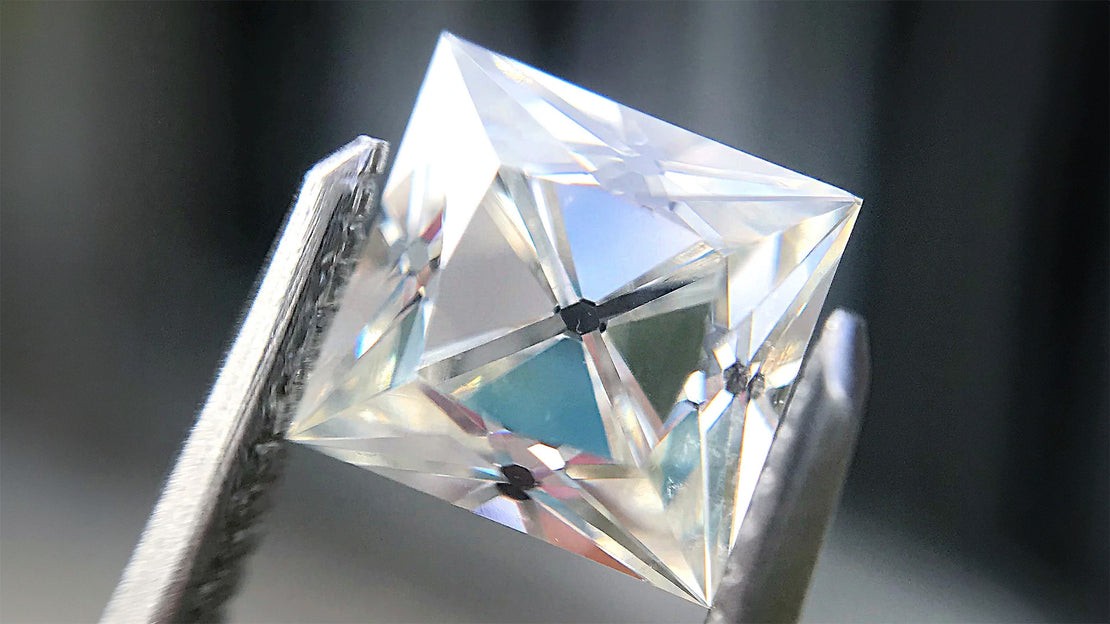The Enduring Elegance of French Cut Diamonds
If you’ve seen a diamond that feels vintage, artful, geometrically perfect—and yet fresh—you were likely admiring aFrench cut. This cut stands out for its sharp symmetry, crisp lines, and quiet, enduring sophistication. In this overview, I'll show you what makes the French cut so magnetic, its history, unique features, and how to showcase its elegance.
What exactly is a French cut diamond?
A French cut diamond stands out for its square or rectangular shape with clipped or beveled corners, but what really makes it unique is the signature cross-pattern of facets that meet at the center of the stone. Usually, this is created by nine carefully placed crown facets, resulting in a visible four-pointed star or cross when light hits the surface. Unlike round or cushion cuts, the French cut’s structured geometry creates a distinct, graphic reflection that is bold and easily recognizable.
These diamonds are typically on the smaller side when cut in this style, but when arranged in bands, eternity rings, or paired sets, they make a dramatic and elegant statement.
A Little History (Because Beauty Has Roots)
- Origins & Early Cut Styles: The French cut likely evolved from very early table cuts (flat top, little faceting) and rose cuts, going back as far as the 1400s. In those days, diamonds were often worn by royalty and nobility as symbols of wealth, status, and even spiritual protection.
- 17th-Century Popularity: By the 1600s, diamonds had become more admired across Europe, not just in courts. Advances in lapidary (gem cutting) meant more precise facets and brighter cuts. Though not yet as refined as later cuts, forms reminiscent of the French cut were used in jewelry for nobles, often with simpler faceting and geometry.
- The Art Deco Moment (1920s-1930s): This is the golden century for the French cut. When Art Deco exploded onto the design scene—bold geometry, symmetry, streamlined elegance—the French cut was a perfect match. Think straight lines, squares, rectangles, and repeated patterns. Jewelers designed bracelets, rings, and bands that leaned into that architectural clean-lined beauty. It was about form as much as sparkle.
- Name & Romantic Appeal: Even though the French cut wasn’t necessarily invented in France, the country has always been synonymous with luxury, style, and refinement. French designers in the early 20th century and the glamour of Paris cemented the idea that anything with “French” name-attached carried cachet. Hence the name “French cut” stuck, possibly as much from admiration as from actual origin.
Consider the words of Coco Chanel: “Fashion changes, but style endures.” In many ways, French cut diamonds represent that enduring style—meticulously crafted, enduringly elegant, and always relevant.
What Makes French Cut Diamonds Special
- Geometric Beauty: The French cut displays a pronounced cross or star-shaped pattern across the top of the diamond, formed by the direct intersection of its facets. This faceting is uncommon and highly distinctive, immediately setting it apart from other cuts.
- Vintage & Art Deco Vibe: If you're drawn to antique or vintage aesthetics, nothing ties you to that era more directly than a French cut.
- Versatility & Pairing Power: Smaller French cuts set in bands, eternity rings, multi-stone designs, or in vintage mountings create cohesion. When they’re lined up—think square shank bands or straight-lined eternity rings—they have a powerful visual rhythm.
- Subdued Brilliance, Elevated Sparkle: The French cut sparkles differently from modern brilliant cuts. Its geometric faceting creates precise, patterned reflections rather than a constant glitter, delivering elegance through unique, structured flashes of light instead of overwhelming brilliance.
Famous Examples & Cultural Moments
Art Deco Jewelry Icons: Look at Cartier, Van Cleef & Arpels, Tiffany & Co., and others during the Jazz Age. Bands and bracelets from the 1920s that use French cut diamonds are now museum pieces—and highly collectible.
Hollywood & Vintage Glamour: Costumers and designers during the 1930s-1950s used French cuts in jewelry for stars. While individual names are often lost, you’ll see them in the sparkle of vintage screen sirens: classic straight bangles, artful lapses of light in brooches or rings.
Modern Resurgence: In recent years French cut diamonds have made a comeback in bespoke jewellery, bridal bands, and high-end vintage inspired designs—because people want pieces with story, with geometry, with soul.
How to Choose & Style French Cut Diamond Jewelry
- Setting Choices: Bezel, half-bezel, channel-set, or square-shank bands all work beautifully. The sleek edges of the French cut harmonize with clean, structured settings.
- Metal Pairing: Yellow gold brings warmth and a vintage glow. White gold or platinum enhances the crisp geometry and makes the diamond’s reflective lines pop.
- Mix or Match: Combine French cuts with baguettes or step cuts in a piece for variety while keeping a linear, architectural feel. Or, let French cuts stand alone in a simple solitaire ring or stud earring—sometimes less is spectacularly more.
- Where It Shines Best: Stack bands, eternity rings, sleek bracelets, or drop earrings. These styles let multiple French cut stones interact, amplify their pattern, and show off that cross-star facet illusion.
Why French Cut Diamonds Still Captivate
Because they’re a fusion of structure and romance. They carry centuries of history—from early European nobility through the roaring ’20s—and yet they feel modern with their clean lines and bold geometry. They’re not about big flashy spectacle—they’re about presence, precision, and personality. If Coco Chanel’s philosophy rings true—that a woman’s elegance comes from how she carries herself—then the French cut is jewelry that doesn’t demand attention: it just earns it.
Explore French Cut Gems at Jewels by Grace
Check out our curated collection:
- Bands and eternity rings with French cut diamonds set in yellow gold, bezel or square shank.
- Stud earrings, twin stone pairs, and bezel bar pendants.
- Custom pieces where you can mix French cuts with color gems (hello, rubies, sapphires!) for a twist.
Imagine owning a piece that is not only beautiful, but also rich in story—history, artistry, and design legacy.
Favorite French Cuts in Our Collection
-
.38ctw French Cut Diamond 6-Stone Square Shank Band
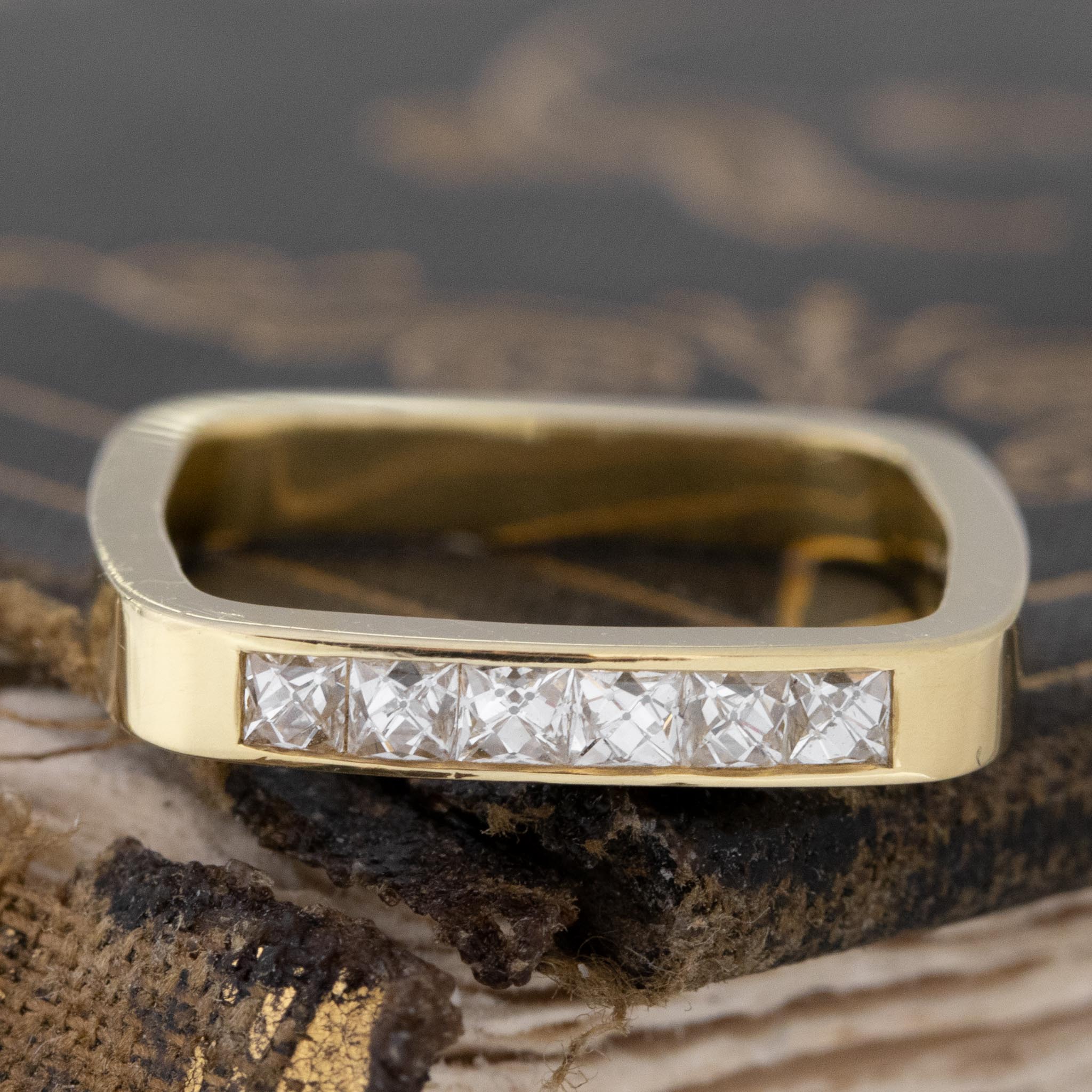
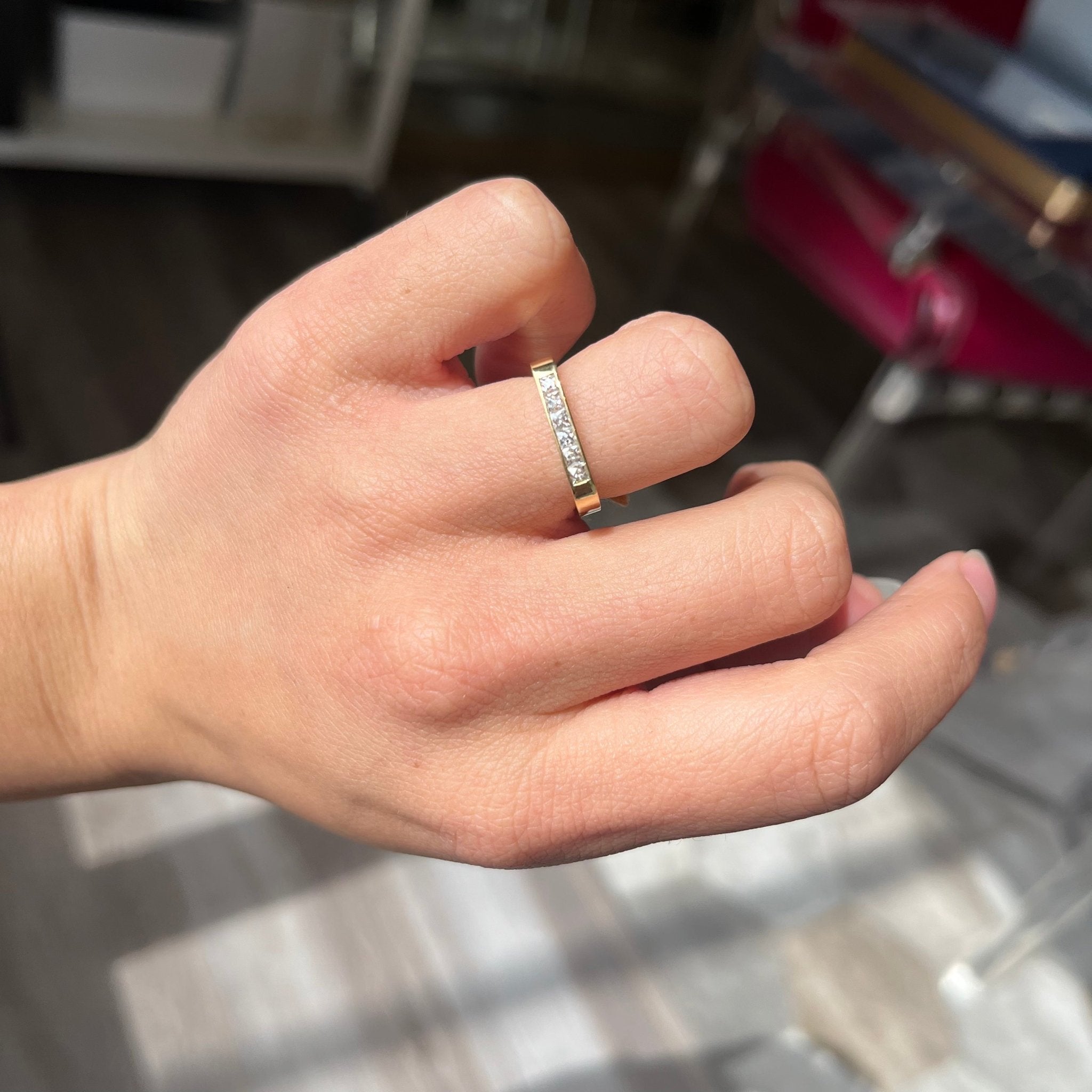
.38ctw French Cut Diamond 6-Stone Square Shank Band
- Regular price
- $2,726.00 USD
- Sale price
- $2,726.00 USD
- Regular price
-
$2,900.00 USD
-
.74ctw French Cut Diamond Twin Stone Stud Earrings
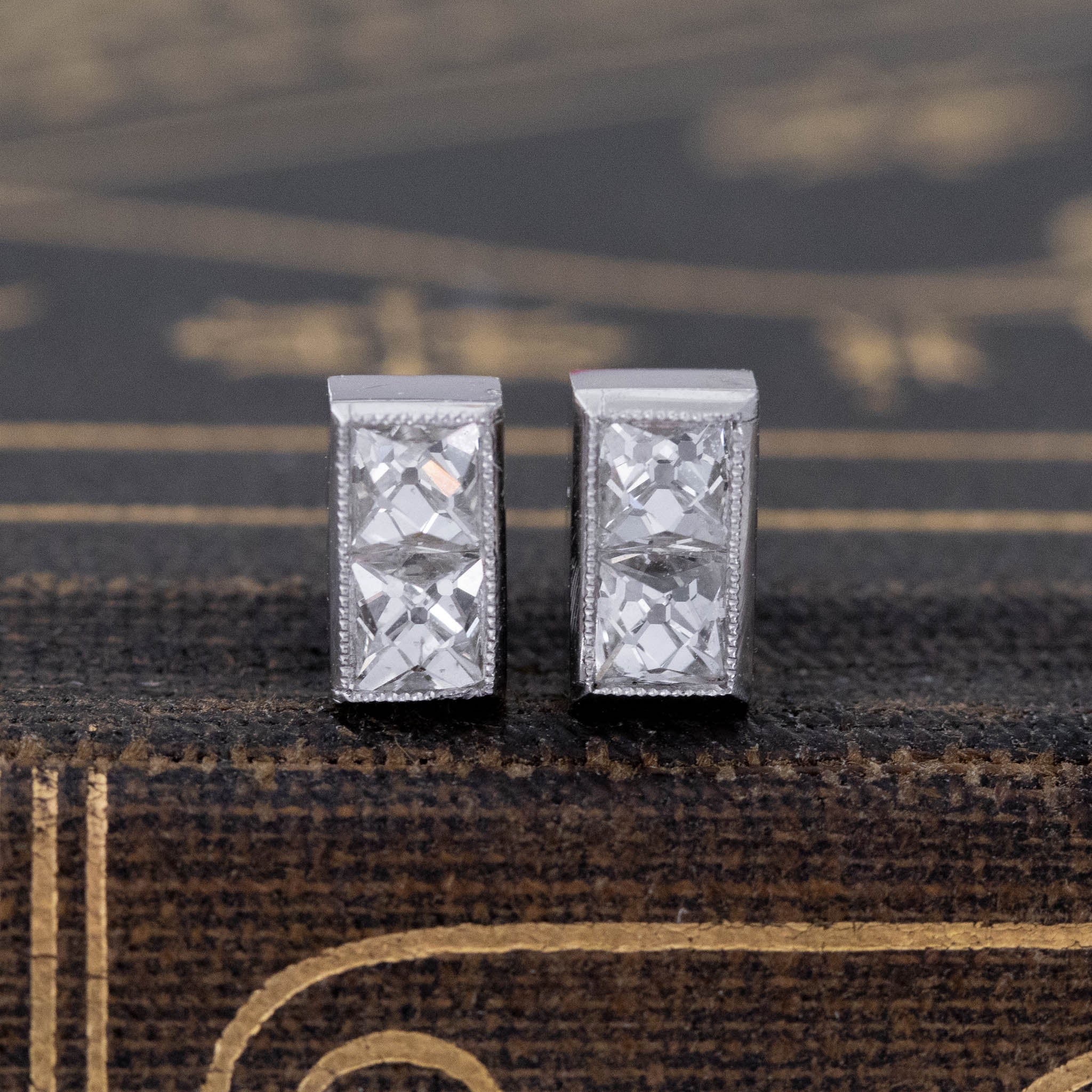
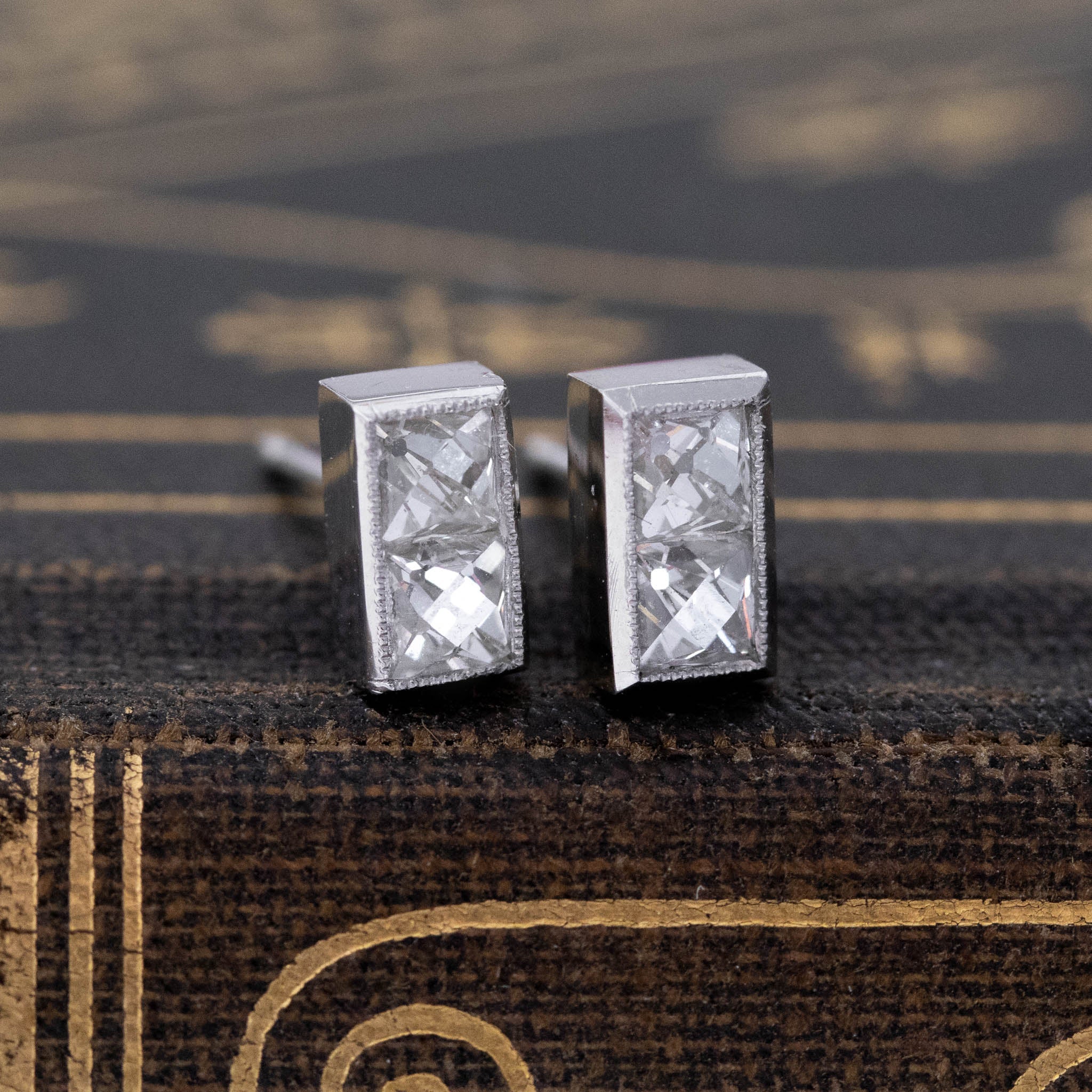
.74ctw French Cut Diamond Twin Stone Stud Earrings
- Regular price
- $2,773.00 USD
- Sale price
- $2,773.00 USD
- Regular price
-
$2,950.00 USD
-
.71ctw French Cut Diamond Bezel Band
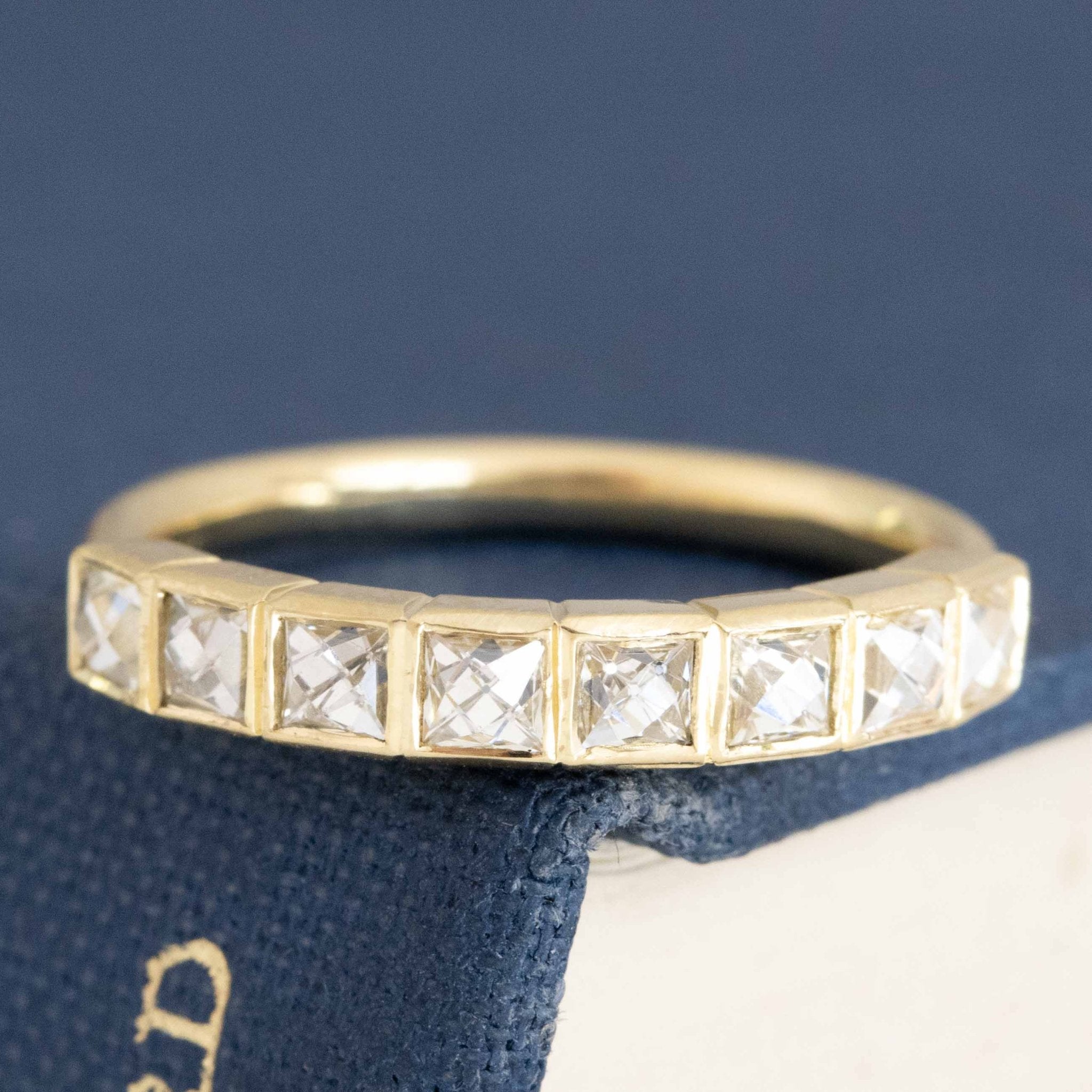
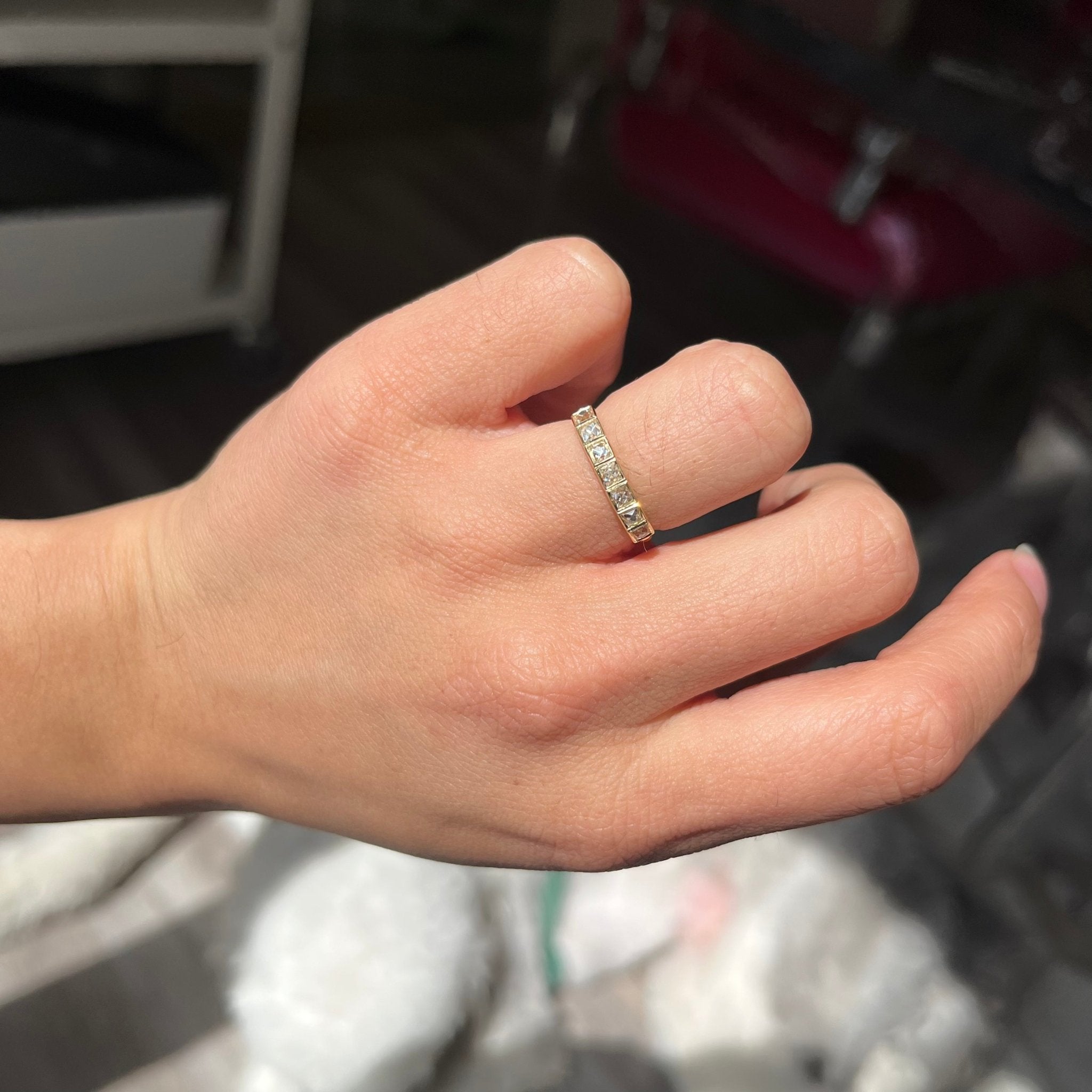
.71ctw French Cut Diamond Bezel Band
- Regular price
- $3,196.00 USD
- Sale price
- $3,196.00 USD
- Regular price
-
$3,400.00 USD
-
.75ct French Cut Diamond Half-Bezel Solitaire
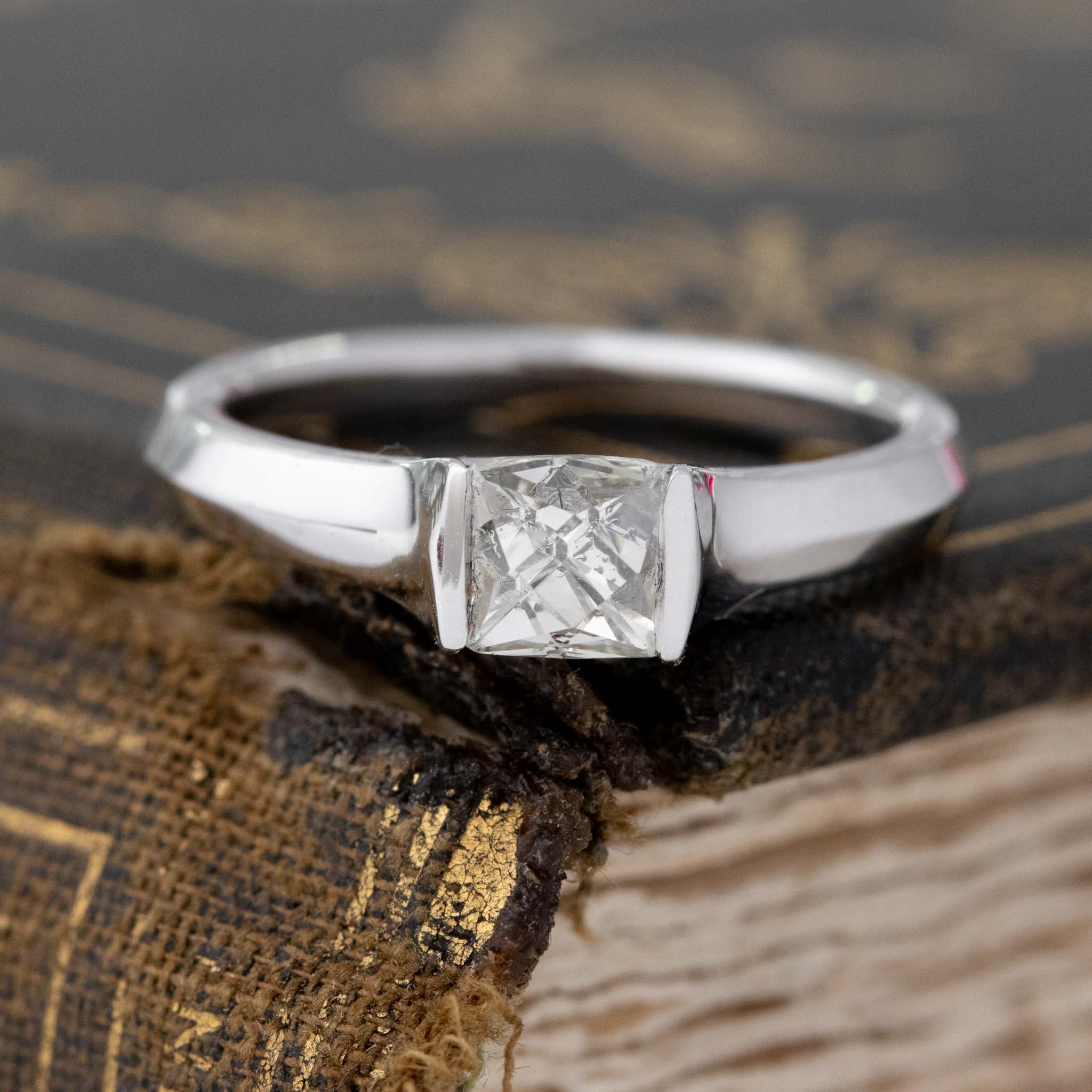
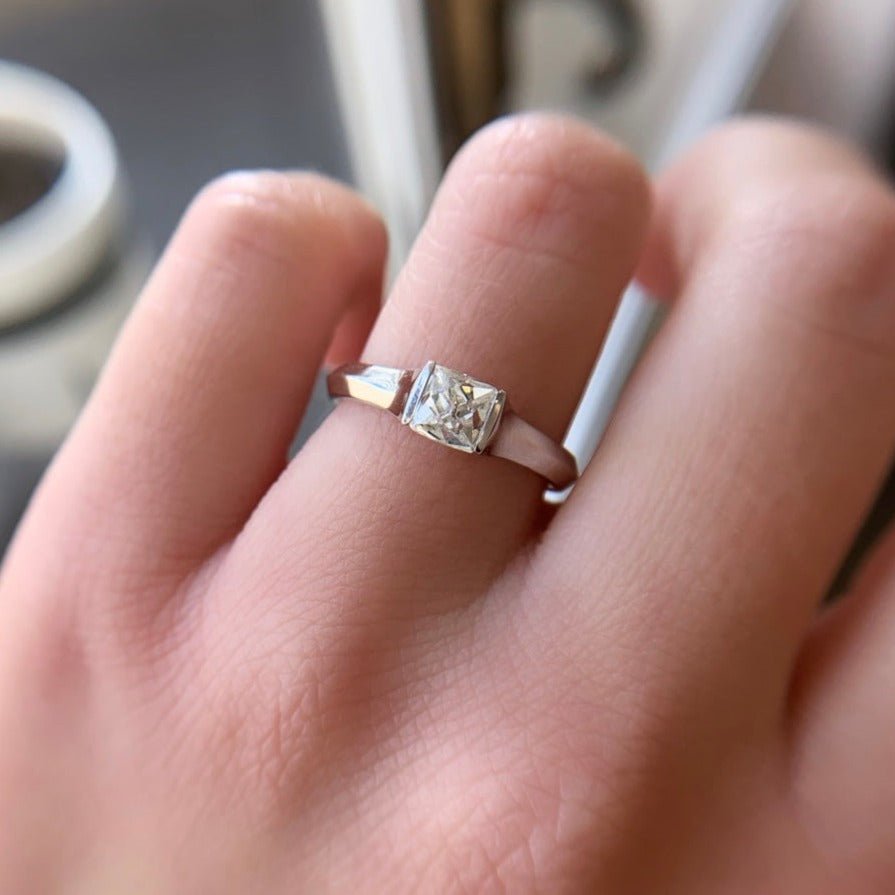
.75ct French Cut Diamond Half-Bezel Solitaire
- Regular price
- $2,538.00 USD
- Sale price
- $2,538.00 USD
- Regular price
-
$2,700.00 USD
-
1.10ctw French Cut Diamond Studs
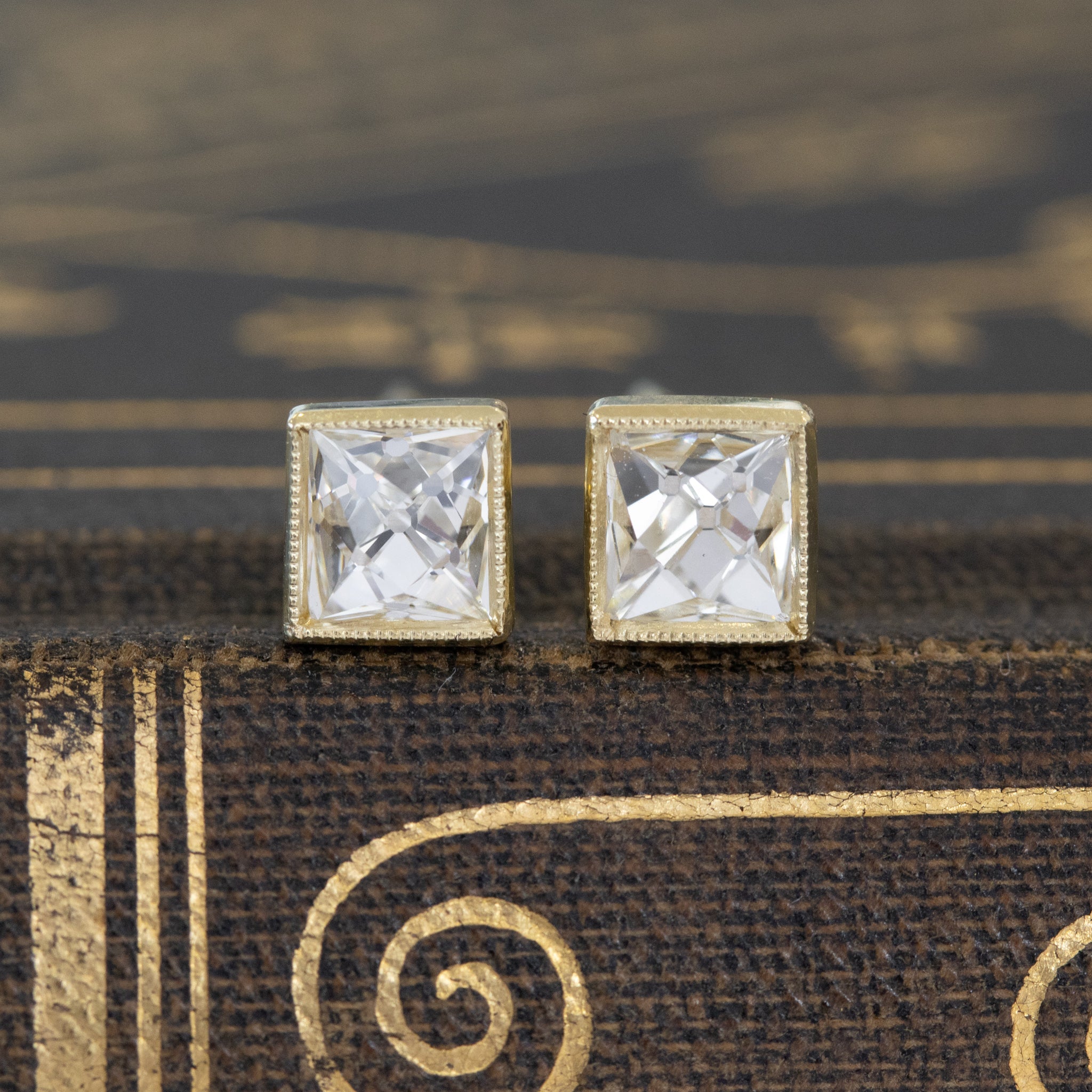
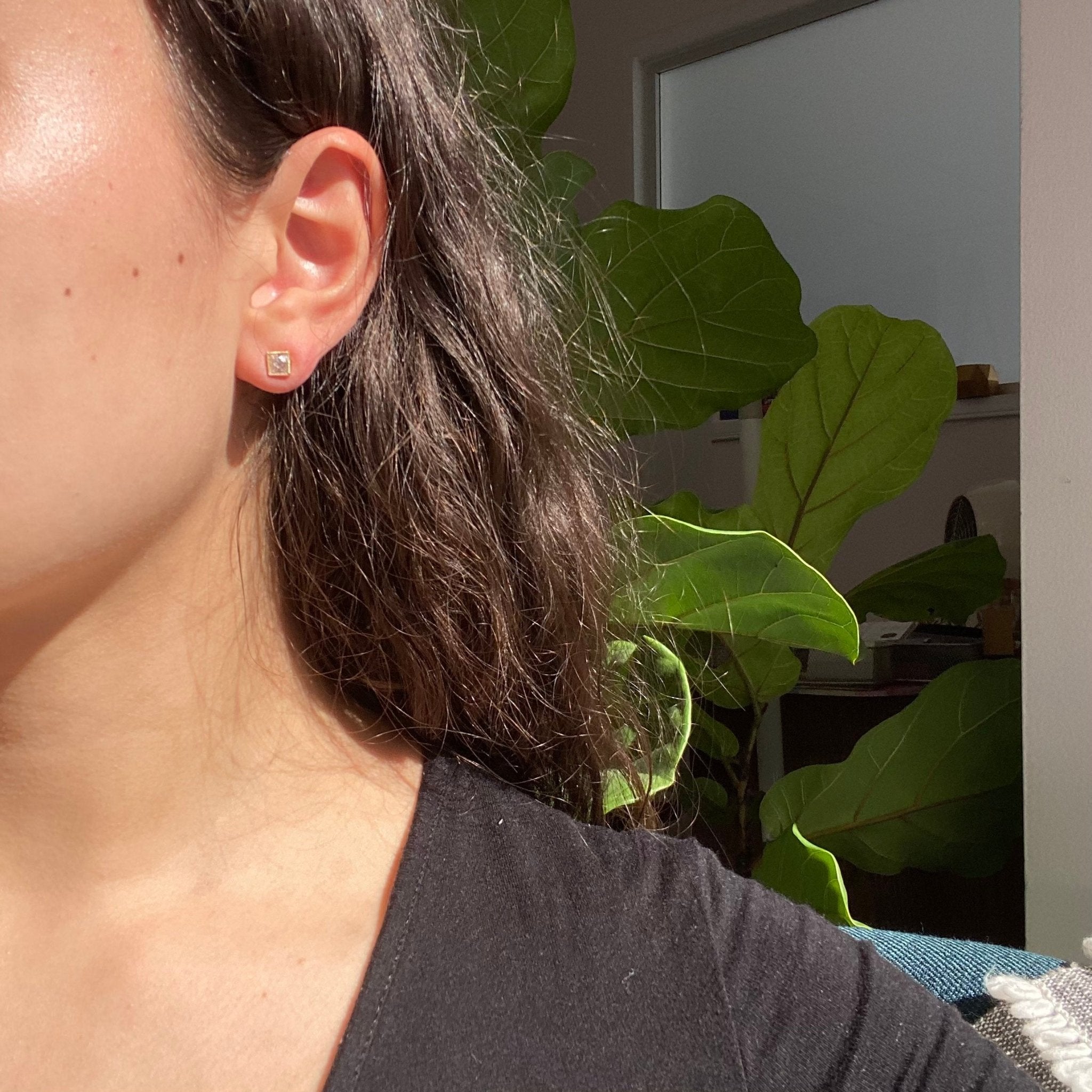
1.10ctw French Cut Diamond Studs
- Regular price
- $4,230.00 USD
- Sale price
- $4,230.00 USD
- Regular price
-
$4,500.00 USD
-
2.32ctw French Cut Diamond 5-Stone Half-Hoop Band
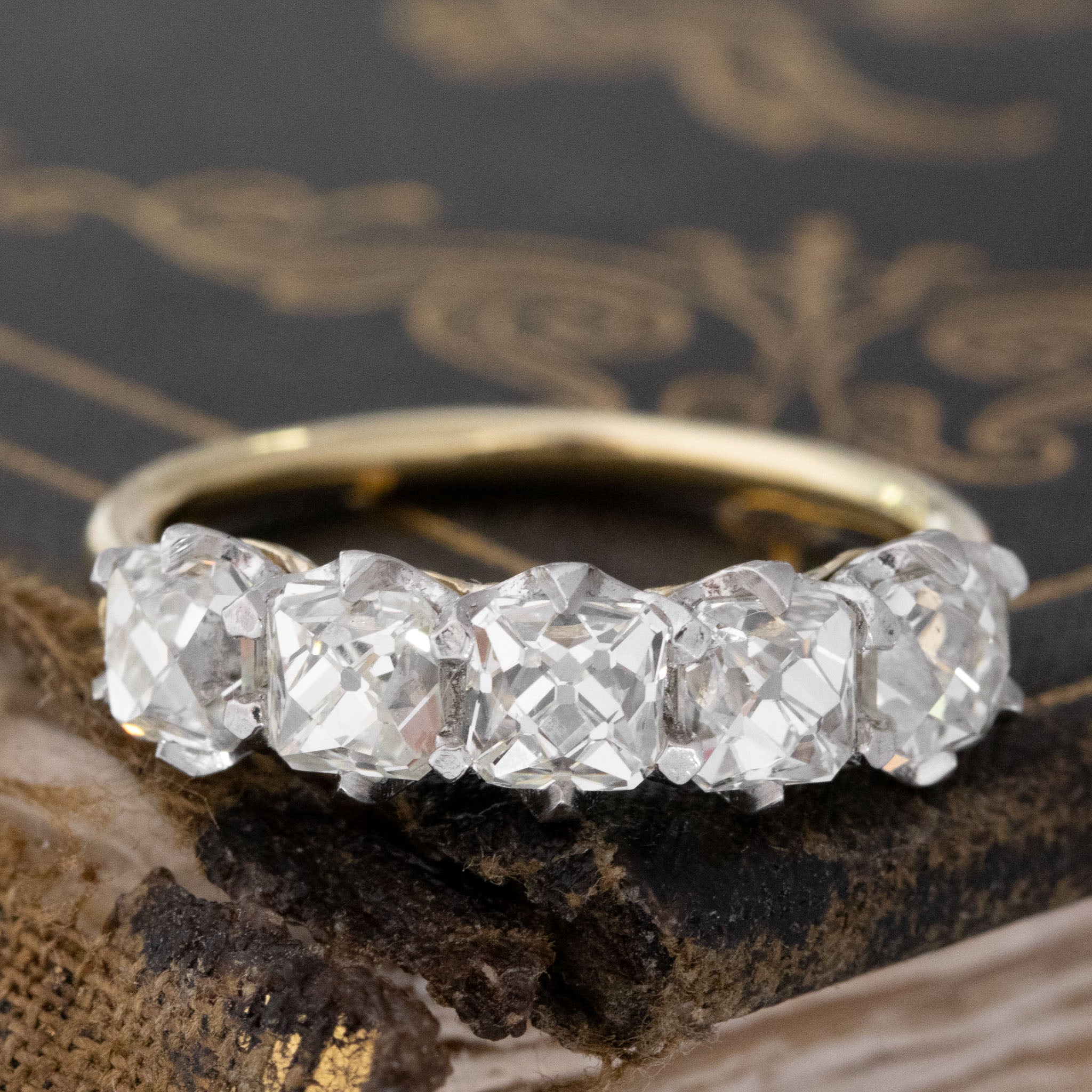
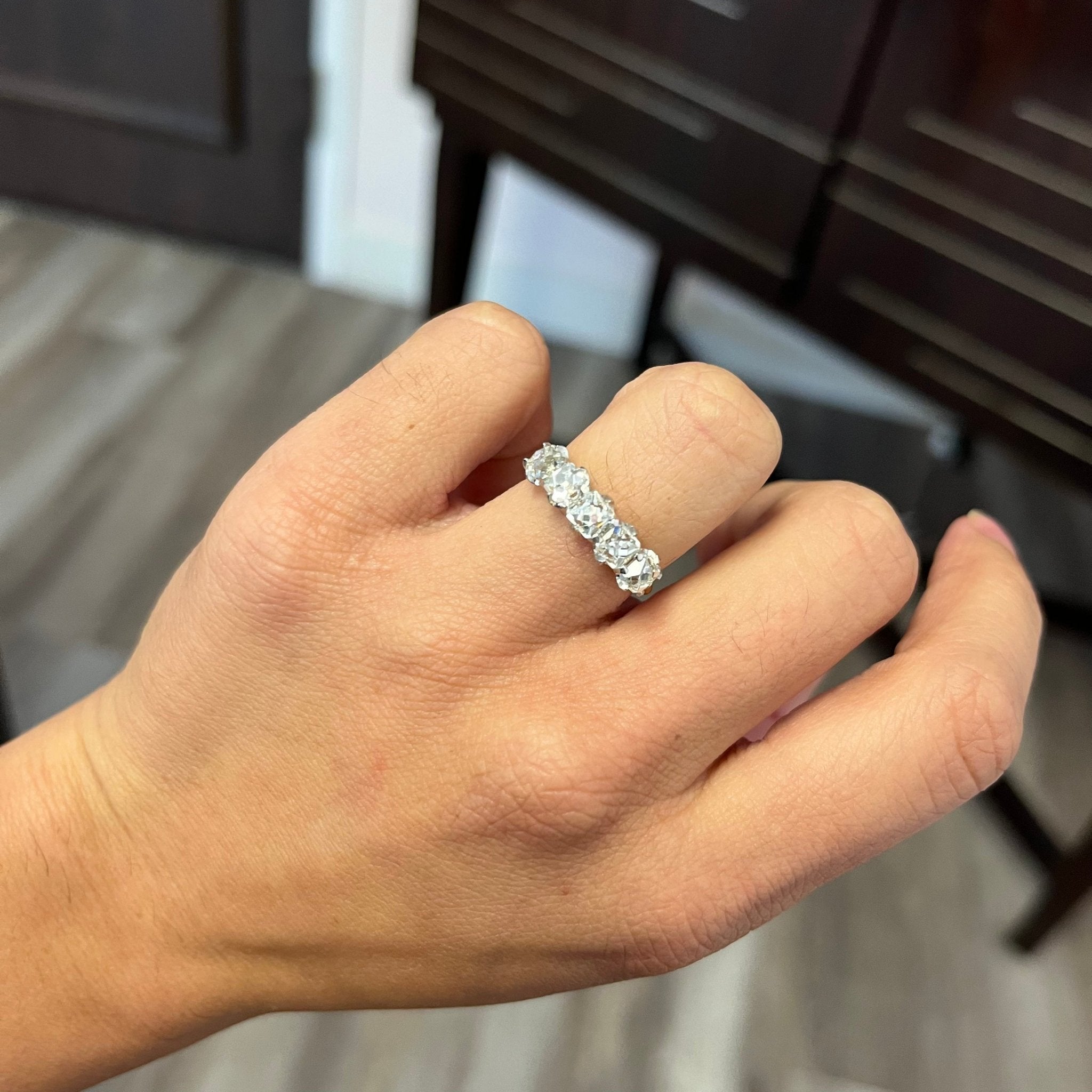
2.32ctw French Cut Diamond 5-Stone Half-Hoop Band
- Regular price
- $8,084.00 USD
- Sale price
- $8,084.00 USD
- Regular price
-
$8,600.00 USD
-
.83ct French Cut Diamond, GIA I VS
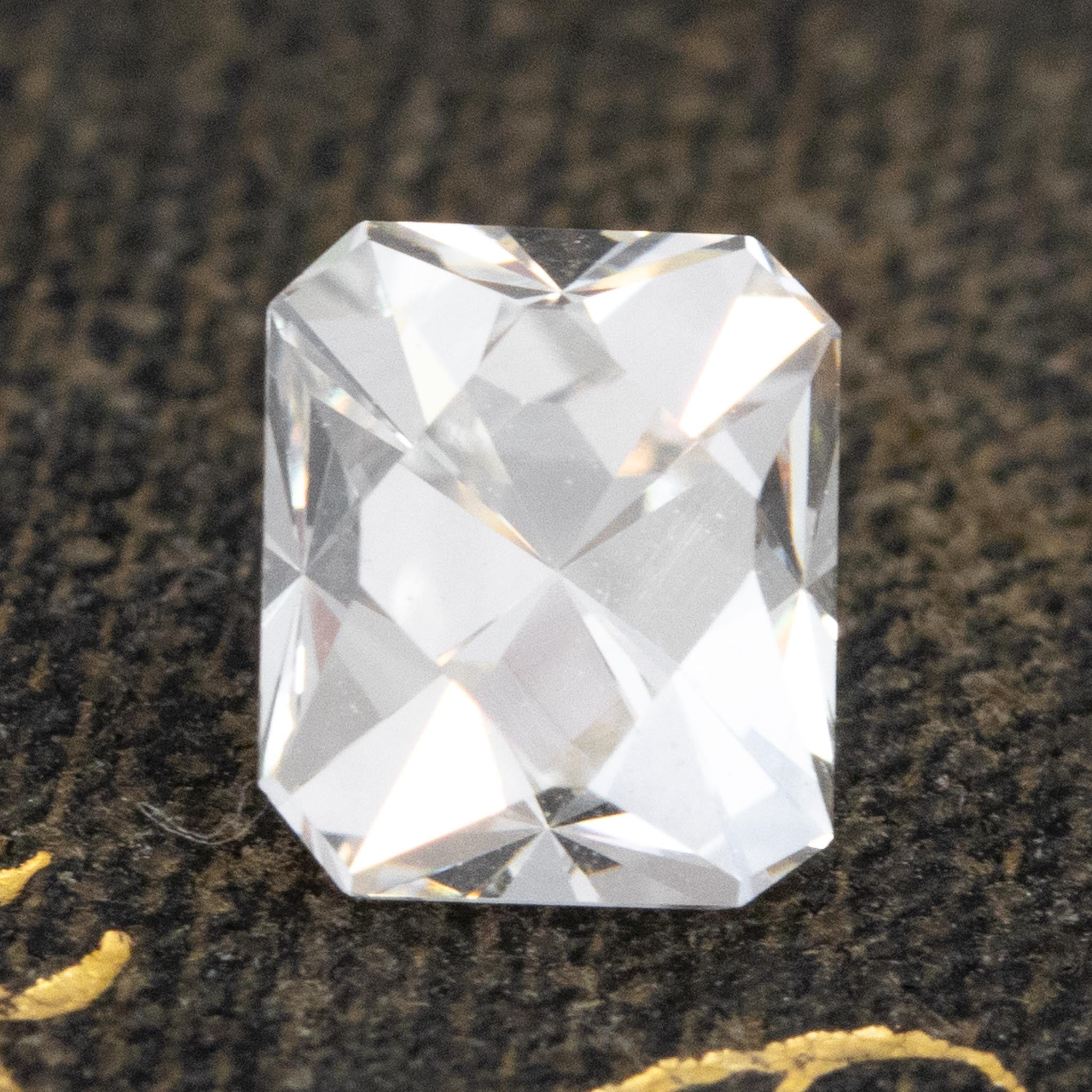
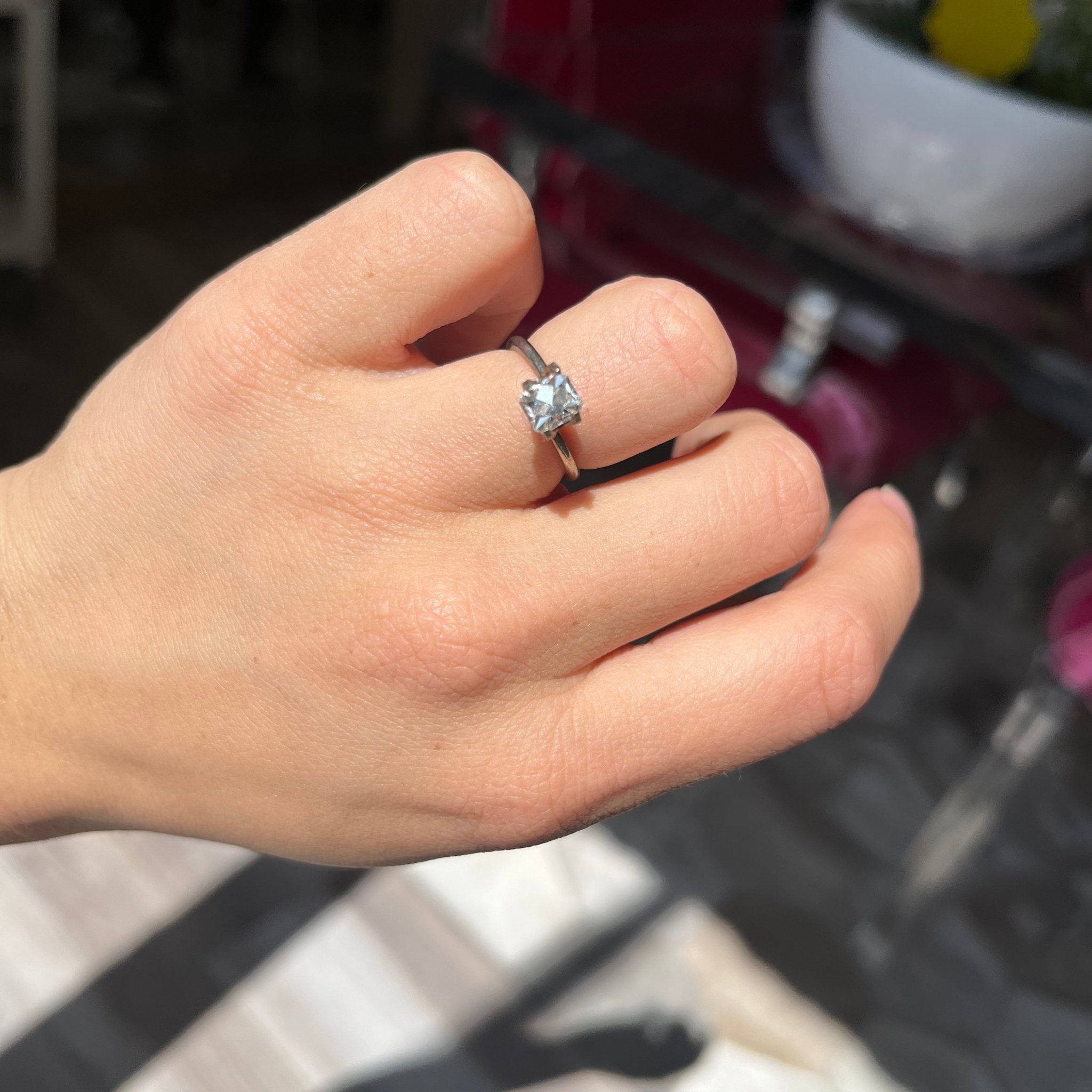
.83ct French Cut Diamond, GIA I VS
- Regular price
- $3,196.00 USD
- Sale price
- $3,196.00 USD
- Regular price
-
$3,400.00 USD


